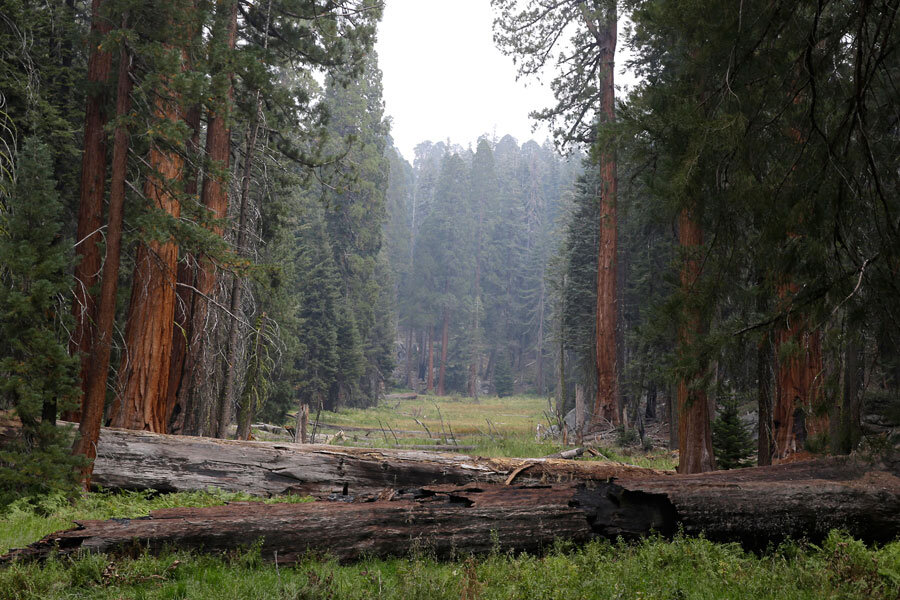California drought: Why a fire might be good for giant sequoias
Loading...
Even as wildfires rage in California, scientists are suggesting that it's time to set some more fires around the state's giant sequoias.
While that may sound like an reckless or desperate idea, the towering drought-stressed trees could actually benefit from a little pruning of the surrounding forest.
In the first health-related study of California’s giant sequoias, more than 40 trees are being studied during one of the worst droughts in the state’s history. The study is a collaborative effort by many agencies, including the National Park Service (NPS), the US Forest Service and the US Geological Survey.
The 75 sequoia groves that grow in the southern Sierra Nevada have survived for thousands of years, through serious ecological stresses, including droughts. So what makes this one different?
Dr. Koren Nydick, a lead scientist with Sequoia National Park which celebrates its 125th anniversary on Friday, says that the fourth year of the current drought is marked by record-low snow pack and some the hottest temperatures ever recorded in the area. A combination of these factors is “the kind of stress that eventually could kill a tree,” Dr. Nydick tells NPR.
Although the sequoias are definitely thirsty, they are not in danger. “The sequoias are holding up, they are being smart,” Dr. Nathan Stephenson with the US Geological Survey tells The Christian Science Monitor. “They are adapting and purposely reducing their water demand.” The struggling sequoias are adapting to the conditions by dropping their old leaves, says Dr. Stephenson.
Researchers are utilizing the severe conditions to map different responses within the sequoia forest, so they can better understand which areas are the most stressed from the drought. By using this information, park rangers will have a better idea of which sequoias are suffering the most from competition with surrounding species.
In what may seem like a case of ecological whiplash, experts such as Dr. Stephenson say the seriously drought-stressed are the ones that need fire the most.
Before European settlers took over the area in the 1800s, the sequoia forests in the Sierra Nevada experienced fires every 5-10 years, with every big sequoia base seeing a fire at least every 20-30 years. The fires, lit by Native Americans and lightning, “came like clockwork” until Europeans began suppressing the fires to preserve their growing infrastructure.
It wasn’t until the 1960s that organized fires were reintroduced in the area, when park rangers realized it’s a mistake to exclude fire for sequoia reproduction and resource competition. “The sequoias are a minority component of a mixed forest,” explains Stephenson. “This mixed forest has become more dense because of fire exclusion in the area. There are now more white firs and incense cedar and they compete for water.”
With some sequoias growing up to 300 feet tall, a single tree can require 800 gallons of water per day. This means that sequoias are not good at sharing.
Whereas these giant trees have a remarkable tolerance for fire, the firs and cedars do not. By mapping “the particularly vulnerable portions of a grove,” experts will know where to prescribe fires when the drought is over. The fire will kill the competing firs and cedars, increasing the neighboring sequoia’s resiliency for future droughts when water is again in high demand.
“By removing competition that’s at an unnatural density, we are getting a forest that looks more like it did 100-200 years ago,” says Stephenson, when sequoias did have to compete with large amounts of firs and cedars.








